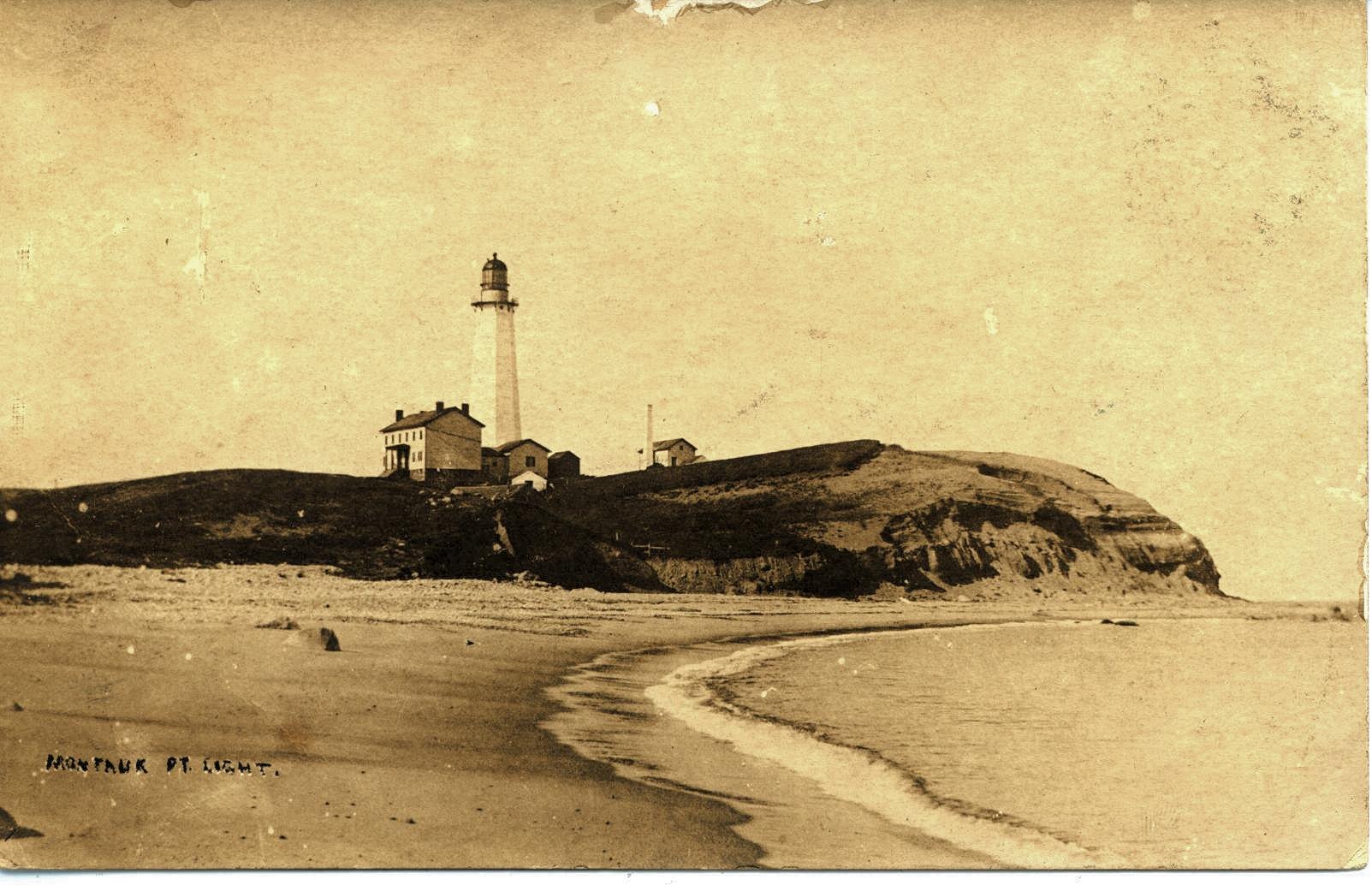 The Montauk Lighthouse structure as we know it today received its daymark, or dark red horizontal band, in 1899. It was done to help sea captains distinguish which lighthouse they were looking at during daylight. A lighthouse at night, with its steady or blinking flash, dispersed location information to the sea traveler, but during the day it was often hard for a captain to determine which lighthouse he was viewing from his vessel sitting four or five miles out to sea.
The Montauk Lighthouse structure as we know it today received its daymark, or dark red horizontal band, in 1899. It was done to help sea captains distinguish which lighthouse they were looking at during daylight. A lighthouse at night, with its steady or blinking flash, dispersed location information to the sea traveler, but during the day it was often hard for a captain to determine which lighthouse he was viewing from his vessel sitting four or five miles out to sea.
This view of the lighthouse, therefore, dates from before 1899, and was donated to the Montauk Library through the Carleton Kelsey collection. Carlton Kelsey (1913-2005), East Hampton Town Historian and Director of the Amagansett Library, amassed thousands of postcards and historic photographs. A few years before he died, he distributed them to institutions according to subject matter, i.e., by event and particular location. The archives at the Montauk Library received a prized group of early images relating to Montauk history.
Reaching the Lighthouse and climbing its stairs has been on the bucket list for explorers and wanderers since the structure was completed in 1796. In New York State, a curiosity about Montauk Point and the Lighthouse has instilled wanderlust in travelers from the Catskills to Buffalo. It is a delightful surprise, therefore, to be able to read online 19th-century accounts of these journeys, accessible through the NYS Historic Newspapers site. Many of these articles from across the Empire State go back well over 150 years. For example, two teachers from Port Jervis, New York, wrote a 5-piece series for the Evening Gazette of Port Jervis in the summer of 1869. They were exploring the South Shore of Long Island, and reporting back to Gazette editors with accounts of their “summer gambol.”
After arriving in East Hampton, the teachers fell in love with its ancient charm, especially its windmills, which were grinding grain upon their arrival. The two, among a group of five on horseback, left for Montauk in the evening and arrived 24 hours later at the Lighthouse. “Montauk Point with its light house, of which I have heard, and read in school boy days, is now a full reality to me, and what geography has told me I now know by actual observation. Although a long ride and a hard ride, it is a most peculiar one and most interesting, and one which may well be endured, at least once in a lifetime.”
He continued: “We reached the Point, the very end of the Island, just as the lamp was lit in the lighthouse and, although wearied by the ride, we could not resist the opportunity of ascending the iron circular stairway of 137 steps – 150 feet above the ocean. It was well worth the effort, the lamp and its apparatus… it is the celebrated Fresnel light, the prisms so arranged that by the revolving prisms a flash is sent out two minutes in every direction.” The teacher was fascinated with the light and gave a detailed description of its operation in the September 2, 1869 issue of the Evening Gazette. He and his companions were impressed, as well, by the lighthouse keeper’s all-night vigil. When asked if his light ever went out, the keeper responded, “My light go out? My light go out! Never! Never!” While they slept soundly, the wind roaring in their ears, “the light was flashing out over dark waters, telling a true story to the mariner, the place of danger and the track of safety.”
In the morning, “with one more journey up the iron stairway of the lighthouse… we started homeward, arriving safely, ready to tell the wonderful things we had seen and heard, the practical thought of which was, by all means make the overland journey from East Hampton to Montauk.”

Reply or Comment